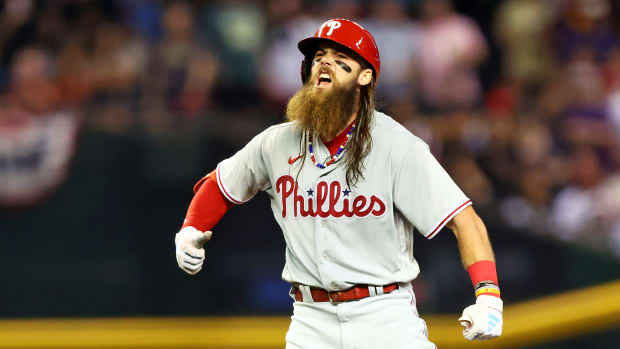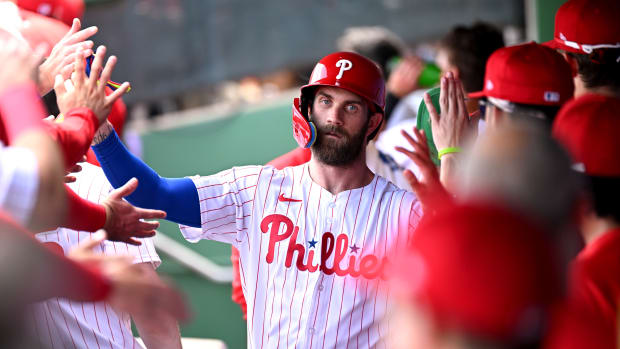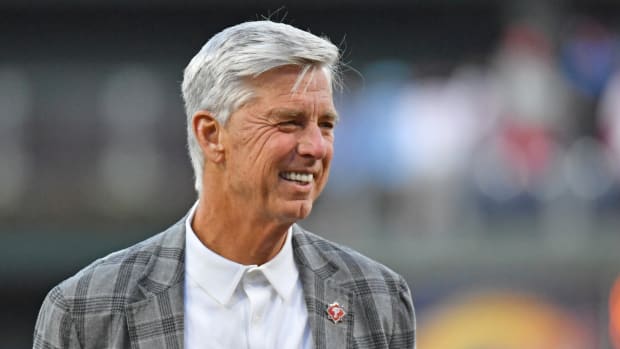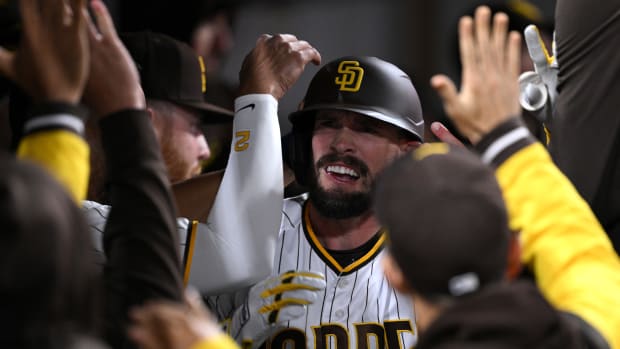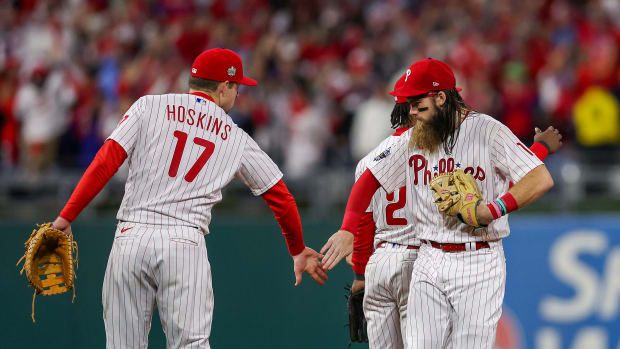Phillies Legends: Richie Ashburn
Richie Ashburn was born on March 19, 1927 in Tilden, Nebraska. From a young age, his father, Neil, saw great potential in his baseball ability. Neil had Richie play all sorts of sports as a kid, but he worked with his son on baseball the most.
Neil taught Richie how to bat left-handed because he figured it would give him an advantage to beat out infield singles. It worked. He also had his son play catcher throughout his youth years because he felt that catching was the easiest path to the major leagues. That worked as well, but Ashburn converted to an outfielder once he made it to the show.
Ashburn was well known for his flashy speed and his ability to put the ball in play. He received many Major League offers, but eventually agreed to sign with the Philadelphia Phillies. He spent a year in the Phillies farm system, and another year in the military, stationed in Alaska. Once he finally returned to the East Coast, he was ready to play in Philadelphia.
In 1948, his rookie season, Ashburn started the first 12 games in left field before manager, Ben Chapman, realized a mixture of his ability to read fly balls and his blazing speed would make him a perfect candidate to defend in centerfield. He certainly did not disappoint, and finished the season as one of the most reliable gloves and bats on the team.
He would remain that way for the rest of his Phillies career, as the city would see him go from young stud to veteran legend. With the Phillies, Ashburn slashed .311/.394/.388 with a .782 OPS.
To get an even better understanding of his dominant career, let’s look at some of his greatest achievements:
- National Baseball Hall of Fame - 1995
- Most outfield putouts of the 1950s
- Most 500+ putout seasons in MLB history - 4
- Single season putout record by an outfielder - 538
- 4x All-Star
- 2x Batting Title
- 154 career assist from centerfield - 9th all time
- 1,980 games played in centerfield - 10th all time
- 5,803 putouts in centerfield - 3rd all time
Ashburn had a bit of a sophomore slump in 1949, but came back in a big way in the 1950 season. He helped keep his team in contention for the NL Pennant all season long, as it came down to the final game of the year. In that game, the Phillies needed a win over the Dodgers to secure the pennant and a slot in the World Series. If they lost, the Dodgers would force a three-game playoff to decide the NL champion.
In the bottom of the ninth with runners on first and second and the game tied, Duke Snider ripped a line drive up the middle which was gathered by Ashburn and rocketed home to get the out and stop the run from scoring. The Phillies went on to win that game in extra innings, and their first NL Pennant since 1915. Ashburn’s play in that game was one of the most important in the history of Phillies baseball.
Richie continued to produce for the Phillies for several more seasons, getting over 200 hits a couple times, leading the league in batting average and on-base percentage in 1955, and dominating the outfield with his consistent glove.
1958 may have been the best season of Ashburn’s career. He led the league in batting average (.350), hits (215), triples (13), walks (97), and on-base percentage (.440). He also had a .984 fielding percentage and made 494 putouts in center field.
In contrast, his 1959 season was the worst of his career. After such a dominant year in '58, Ashburn saw his numbers in every hitting and fielding category drop dramatically. When the season was over, the Phillies traded Ashburn to the Cubs where he would play a decent center field for two seasons with a solid bat at the plate.
For his 15th and final season, Ashburn went to New York to play with the Mets in one of the worst single seasons any franchise has ever had. Ashburn was one of the bright spots of the team, but the Mets finished the year with a 40-120-1 record.
Richie did not wish to play another season with a non-competitive team, so he hung up the cleats for good and retired after that 1962 season. He did not leave the game of baseball for good however, as he accepted a job as a color commentator for the Phillies from 1963 until his death in 1997.
Ashburn spent 12 seasons playing in Philadelphia, and then another 34 seasons as their color commentator. He is and will always be a legendary figure in Philadelphia sports. His number 1 has been retired with the Phillies, and the centerfield concourse of Citizens Bank Park is named “Ashburn Alley” in his honor.
He will always be remembered for his historic accomplishments with the Phillies franchise, and his plaque will forever remain in Cooperstown, New York at the National Baseball Hall of Fame.
More From SI's Inside The Phillies:
- Phillies Trade Scenarios: Who Might Dombrowski Move This Offseason?
- Could Acquiring Starling Marte Make Sense for Phillies?
- Arbitration Projections: Who Will the Phillies Keep?
Make sure to follow Inside the Phillies on Facebook and Twitter!

